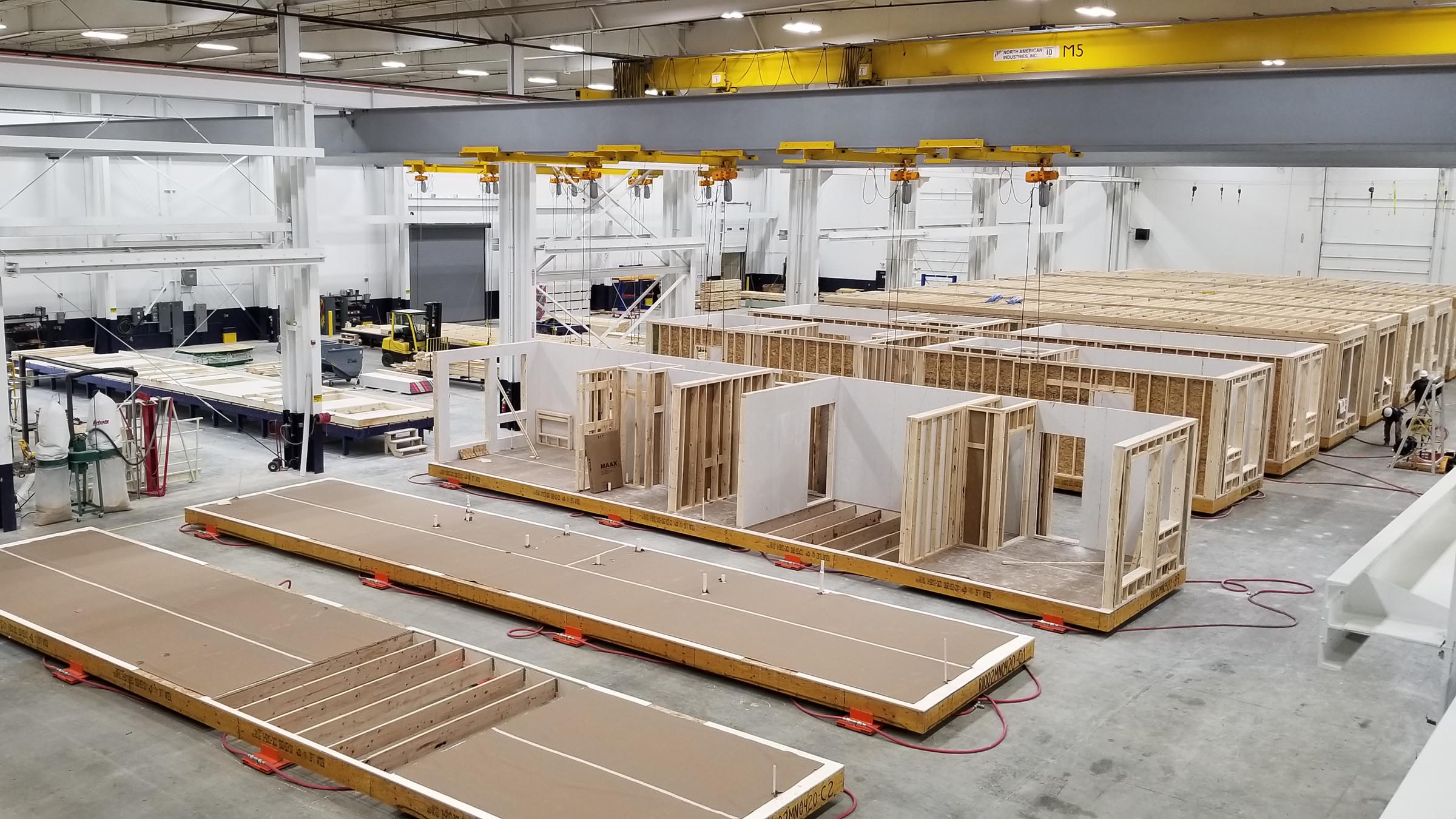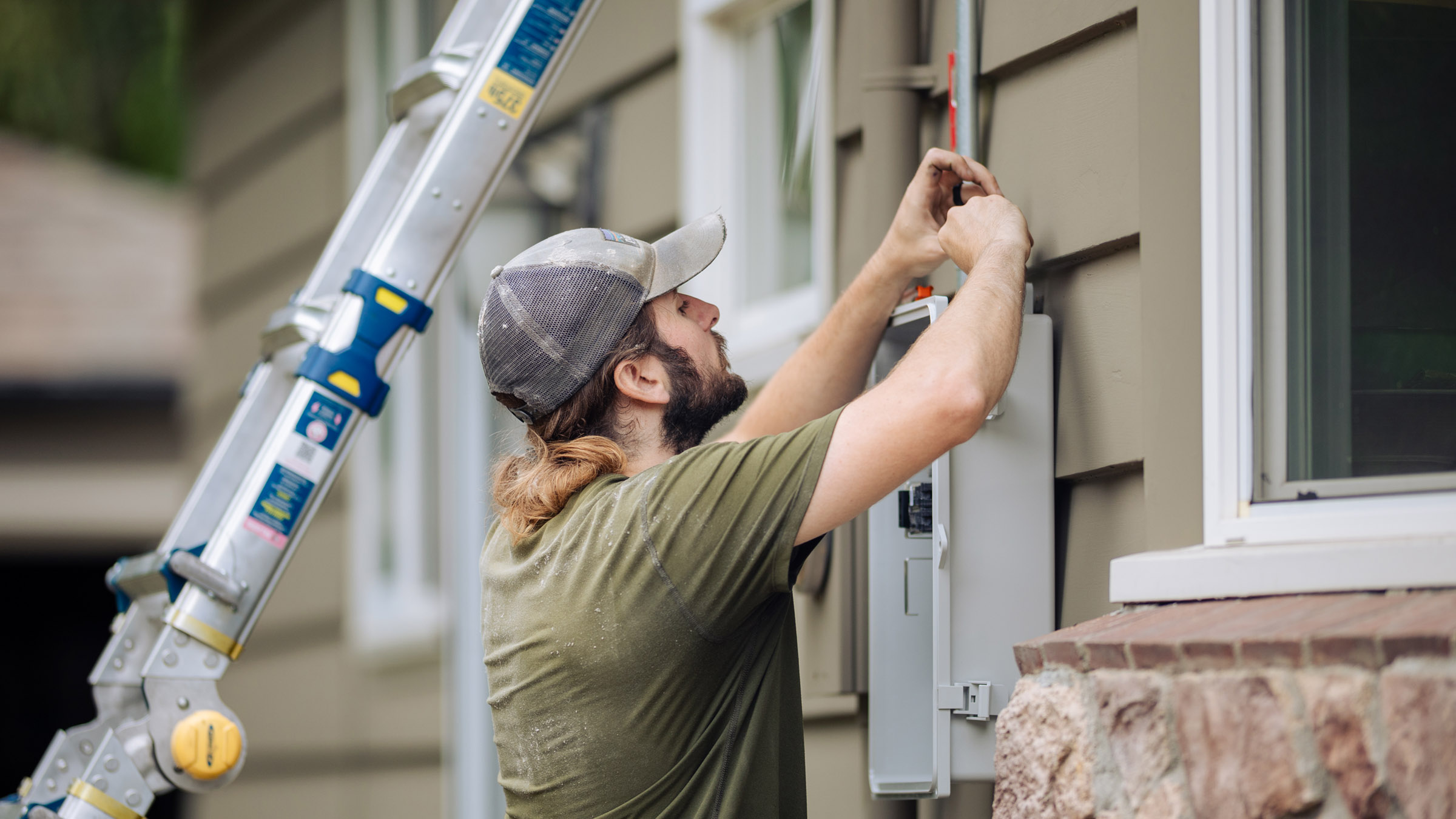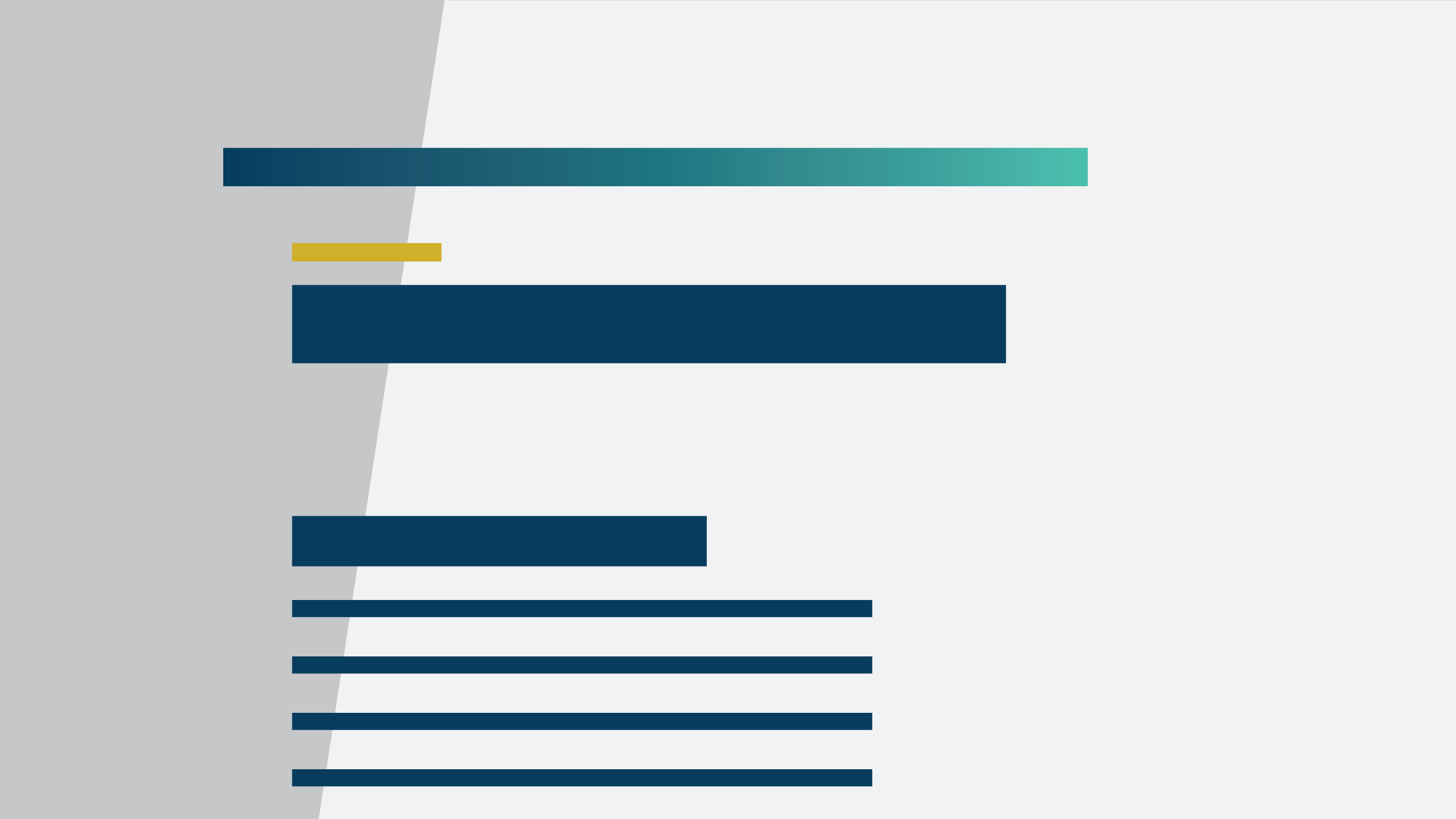During 2016, 56 percent of small businesses in the Ninth Federal Reserve District* experienced at least one financial challenge, a lower share than the 61 percent of small businesses nationally that experienced financial challenges, according to results of the Federal Reserve System’s Small Business Credit Survey (SBCS) (see Chart 1). Of the Ninth District respondents, credit availability or securing funds for expansion was the most cited financial challenge, followed by operating expenses, debt payments, and purchasing inventory to supply or fulfill contracts. In Montana, North Dakota, and South Dakota, which were grouped together due to relatively small state sample sizes, 46 percent of respondents faced a financial challenge, a smaller share than in Minnesota, Wisconsin, and the U.S. A small business is defined as a firm with fewer than 500 employees.
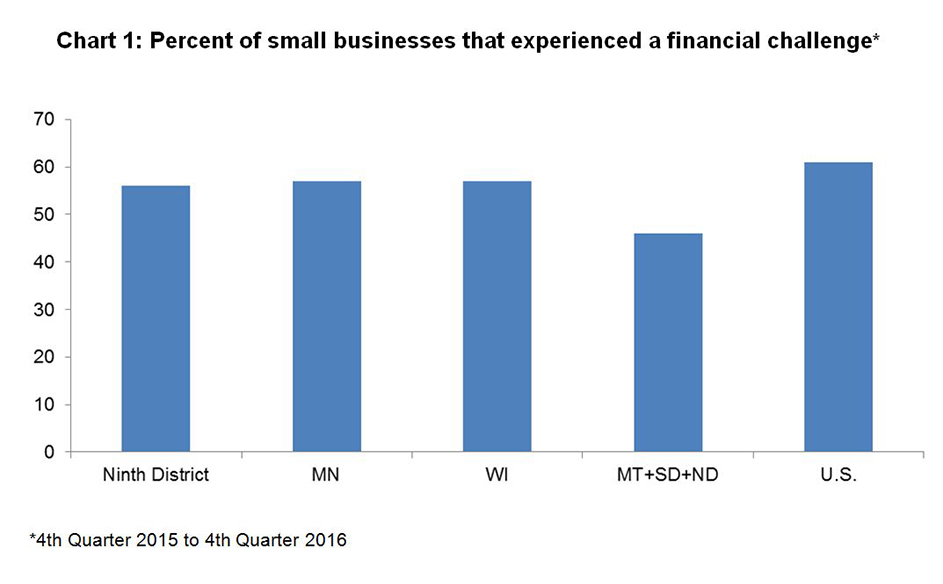
Of Ninth District respondents who faced a financial challenge in 2016, 73 percent turned to their own personal funds in response—a higher share than those who responded by taking out additional debt (46 percent), making a late payment (46 percent), or cutting staff and/or downsizing operations (42 percent) (see the table below). A larger share of small business operators in Montana, North Dakota, and South Dakota took out additional debt than in Minnesota, Wisconsin, and the U.S., and a smaller share used personal funds or took other actions. Results for Minnesota and Wisconsin largely mirrored those of the United States.
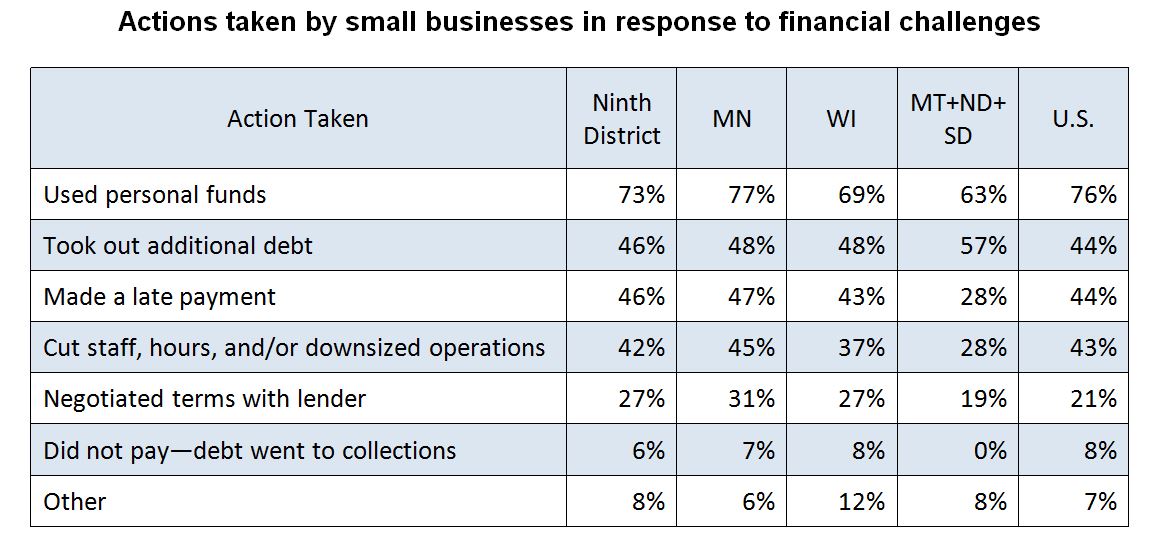
Survey respondents faced their financial challenges in the context of relatively positive business conditions, with strength noted in profitability (as of the end of 2015), revenue, and employment. Corresponding diffusion index values for the U.S. as a whole and for Ninth District states were all above 0, indicating expansion. (Values below 0 indicate contraction.) Profitability was stronger than revenue and employment in most areas, except for Wisconsin, where relatively more respondents indicated growth in employment (see Chart 2).
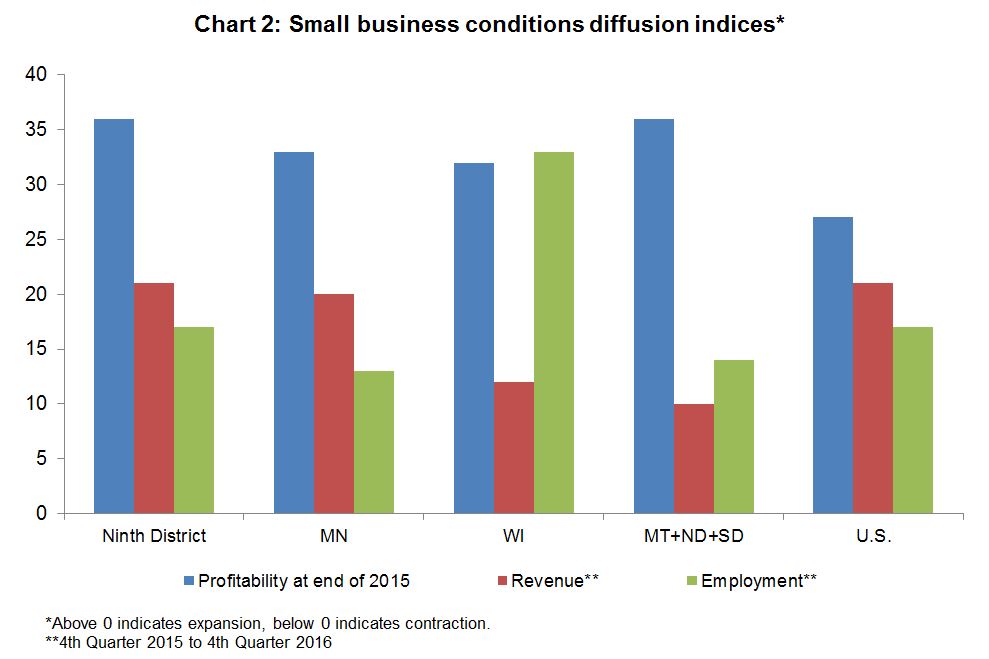
The 12 Reserve Banks of the Federal Reserve System conducted the survey during fourth quarter 2016. A total of 10,303 small businesses located in 50 states and the District of Columbia responded to the survey (846 employer firms located in Ninth District states responded). The SBCS is conducted annually using a convenience-sample survey in partnership with business associations, local agencies, and nonprofit organizations. For individual state reports, results are weighted to reflect the full population of firms in the state along these dimensions: industry, age, number of employees, and geography. See the full report for more information about the survey design and weighting methodology.
For any questions about the SBCS or to become a survey partner, please contact Michou Kokodoko at the Federal Reserve Bank of Minneapolis.
* The Ninth Federal Reserve District includes Minnesota, Montana, North and South Dakota, 26 counties in northwestern Wisconsin, and the Upper Peninsula of Michigan. For this analysis, Wisconsin includes the full state and Michigan is excluded.
Michou Kokodoko is a senior policy analyst in the Minneapolis Fed’s Community Development and Engagement department. He leads the Bank’s efforts to promote effective community-bank partnerships by increasing awareness of community development trends and investment opportunities, especially those related to the Community Reinvestment Act.



